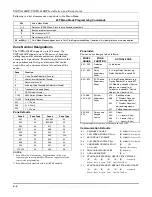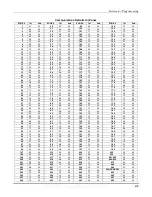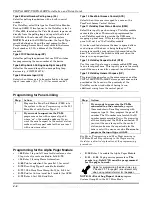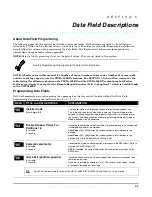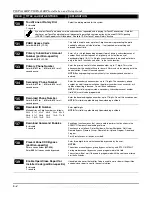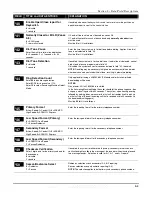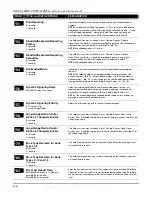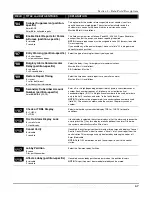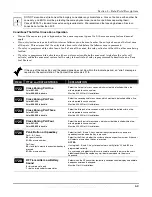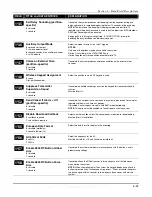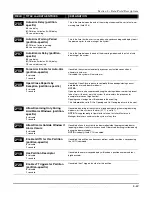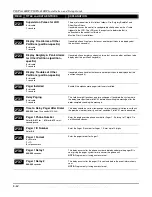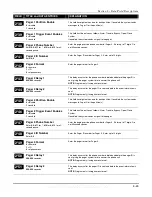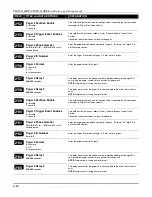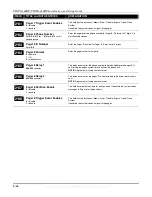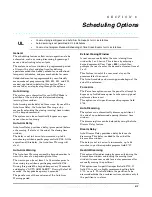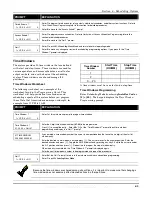
VISTA-128BP/VISTA-250BP Installation and Setup Guide
5-8
FIELD
TITLE and DATA ENTRIES
EXPLANATION
1*19
Arms Lobby (partition-specific)
0
= disable
1
= enable
If enabled, arming this partition causes the system to attempt to arm the lobby
partition automatically. To enable this field, field 1*18 must also be enabled
(partition-specific).
NOTES:
The lobby cannot be armed unless all partitions programmed for “affect” (field
1*18) is already armed.
If his field is enabled, Field 1*18 for this partition must also be enabled.
Exit Error Logic Enable
0
= disable
1
= enable
Exit Error Logic functions as follows: the system at the end of the exit delay, if a
door is left open or an interior zone is faulted, starts the entry delay period, and
sounds the bell(s), siren(s), and keypad sounders for the duration of entry
delay. This gives the user time to re-enter the premises and disarm the system
before exit error occurs.
If the user does not re-enter the premises and disarm the system, the system
bypasses the faulted entry/exit and/or interior zone(s). The rest of the system is
armed. In addition, the following dialer reports are sent to the central station if
programmed:
Exit Error by User (not sent when is using ADEMCO High Speed format)
Entry/Exit or Interior Alarm with the zone number
Bypass reports
NOTE: SIA Guidelines: This field must be enabled.
UL
Exit Error Logic is not suitable for use in a UL installation.
1*20
Exit Delay Reset
0
= disable
1
= enable
If enabled, when the panel is armed, the normal exit delay begins. After the
user exits, closes the door and then re-enters the premises, the exit delay time
is reset to the programmed value.
NOTES:
Exit Delay Reset is designed to allow an operator to re-enter the premises to
retrieve a forgotten item without triggering an alarm. This feature may only be
activated once after arming. SIA Guidelines: The Exit Delay must be enabled.
UL
Exit Delay Reset is not suitable for use in a UL installation.
1*21
Cross-Zoning
UL
Cross Zoning is not suitable for use in a UL installation.
Cross Zoning is designed so that a combination of two zones must be faulted within a 5-minute period of each other
(whereas the first zone remains faulted, when the second zone trips) to cause an alarm on either zone. This prevents
momentary faults from one of the zones from causing an alarm condition.
You can select four "sets" of cross-zones (programmed in data fields 1*22, 1*23, 1*24, and 1*25), keeping in mind the
following:
•
Both zones in each set must protect the same area.
•
When cross-zoning motion sensors, both device's areas of protection must be situated so that both units will trip at
the same time if their shared protected area is violated.
•
Both zones in each set must be in the same partition.
•
A fire zone must only be crossed to another fire zone protecting the same physical area
(see warning below).
WWW.DIYALARMFORUM.COM
WWW.DIYALARMFORUM.COM

